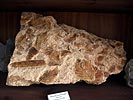 Camerano Casasco is a village located in the Monferrato region of Italy; it is a member of the Comunità Collinare della Val Rilate (the Rilate Valley hillside village community). This community, costituted on October 28 2000, has 13 member villages.
Camerano Casasco is a village located in the Monferrato region of Italy; it is a member of the Comunità Collinare della Val Rilate (the Rilate Valley hillside village community). This community, costituted on October 28 2000, has 13 member villages.
Situated about 10 miles north-east of Asti, on the road linking Asti to Chivasso, the Val Rilate area comprises the hills extending from the Cortazzone valley to the West, to the Versa creek valley to the north-east, having at its center the Rilate creek valley, from which the hillside village community takes its name.
The community extends over a total surface area of some 20 000 acres and had a population at 31 December 2000 of 6.470 inhabitants, with an average density of .32 abitanti per acre. The Riserva Naturale Regionale Valleandona (Regional Nature Park Valleandona) is located in a nearby valley.
The Riserva Naturale Regionale Valleandona (Regional Nature Park Valleandona) is located in a nearby valley.
This nature park has an area of occupa un'area di 734 acres, composed of a number of small hills and valleys formed in the Pliocene geological era.
It is divided into two separate main valleys, and is totally covered by wild woods of oak, birch, linden and acers.
The area is known internationally for the richness of fossil remains of the marine life that lived in the waters that covered all the Po valley in the Pliocene geological era (between 5 milioni and 1,8 millions of years ago). The fossil remains, pergectly preserved, are found in the sandy strata of the steep hills : hundreds of species of molluscs, brachiopods, corals, echinodermsm artropods and, sometimes, bones of marine mammals. The preservation of the fossil remains is the main purpose of the nature park.




Geological-paleontological path: This path covers the most interesting parts of the nature park. It can only be walked together with a guide, which can be reserved free of charge.
Asti Paleontological Museum: located in the "S. Pietro" Complex, built in the 12th century; comprises two floors: the paleontology rooms on the ground floor, with local fossil remains dating back to the Tertiary Era.
The upper floor rooms contain archeological objects from several different civilizations (Egyptian, Greek, Roman and medieval).
The Monferrato (in piedmontese Monfrà [m??'fra]) is a geographic region of Piedmont.
 Its territory, almost exclusively hilly, is mainly located within the provinces of Alessandria and Asti; it reaches southwards from the southern bank of the Po river up to the foothills of the Ligurian Appennines, to the borders of the Genoa and Savona provinces.
Its territory, almost exclusively hilly, is mainly located within the provinces of Alessandria and Asti; it reaches southwards from the southern bank of the Po river up to the foothills of the Ligurian Appennines, to the borders of the Genoa and Savona provinces.
The Monferrato can be divided into two main parts:
Low Monferrato: this is the larger part, characterized by its smooth hills that, apart from the Sacro Monte di Crea (1500 feet), do not reach a height greater than 1300 feet; territorially it is bound northwards and eastwards by the rivers Po and Tanaro. southwards by the Belbo river valley and westwards by the border between the Asti and Cuneo provinces, where the Langhe and Roero regions start. Its highest point is the Albugnano hill, at some 1800 feet.
High Monferrato: reaches southwards from the Bormida valley up to the foothills of the Ligurian Appennines; is bound Westwards by the Bormida di Spigno valley and Eastwards by the westernmost part of the Scrivia valley.